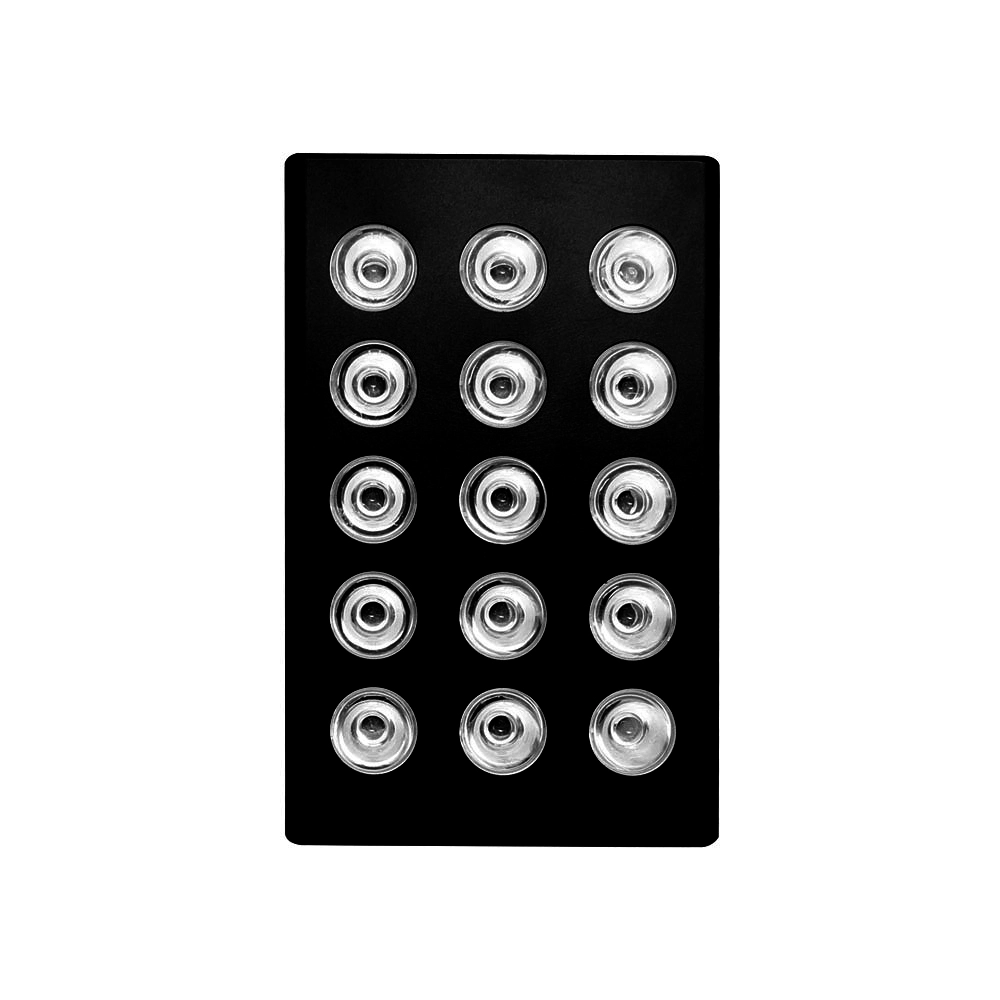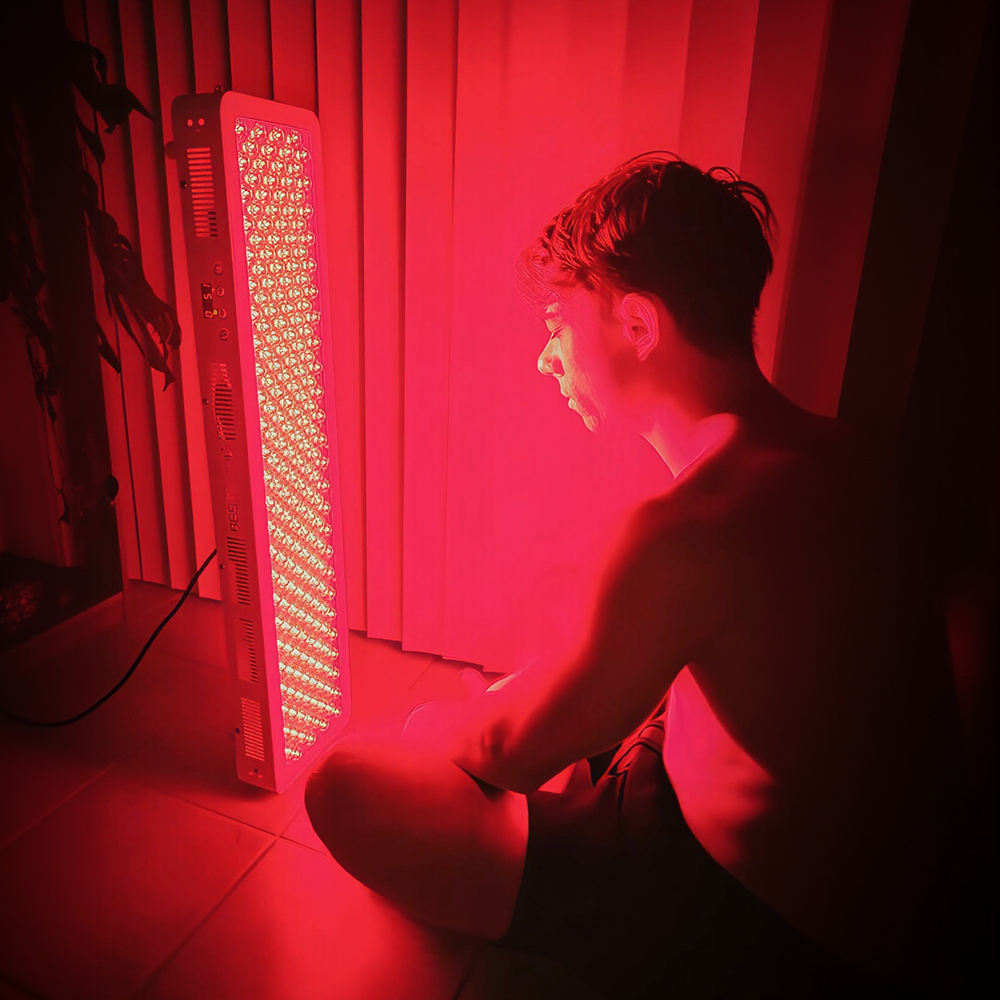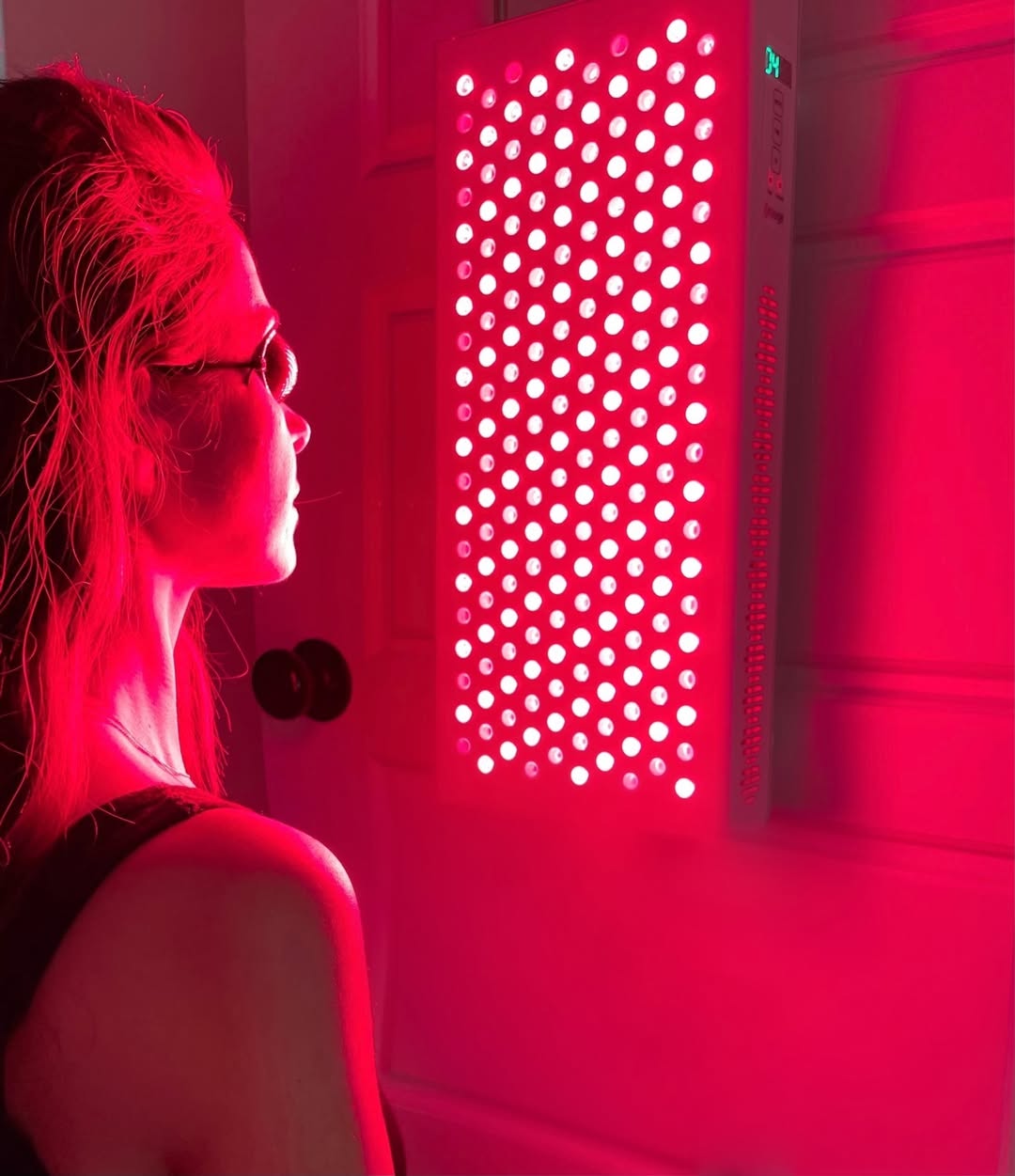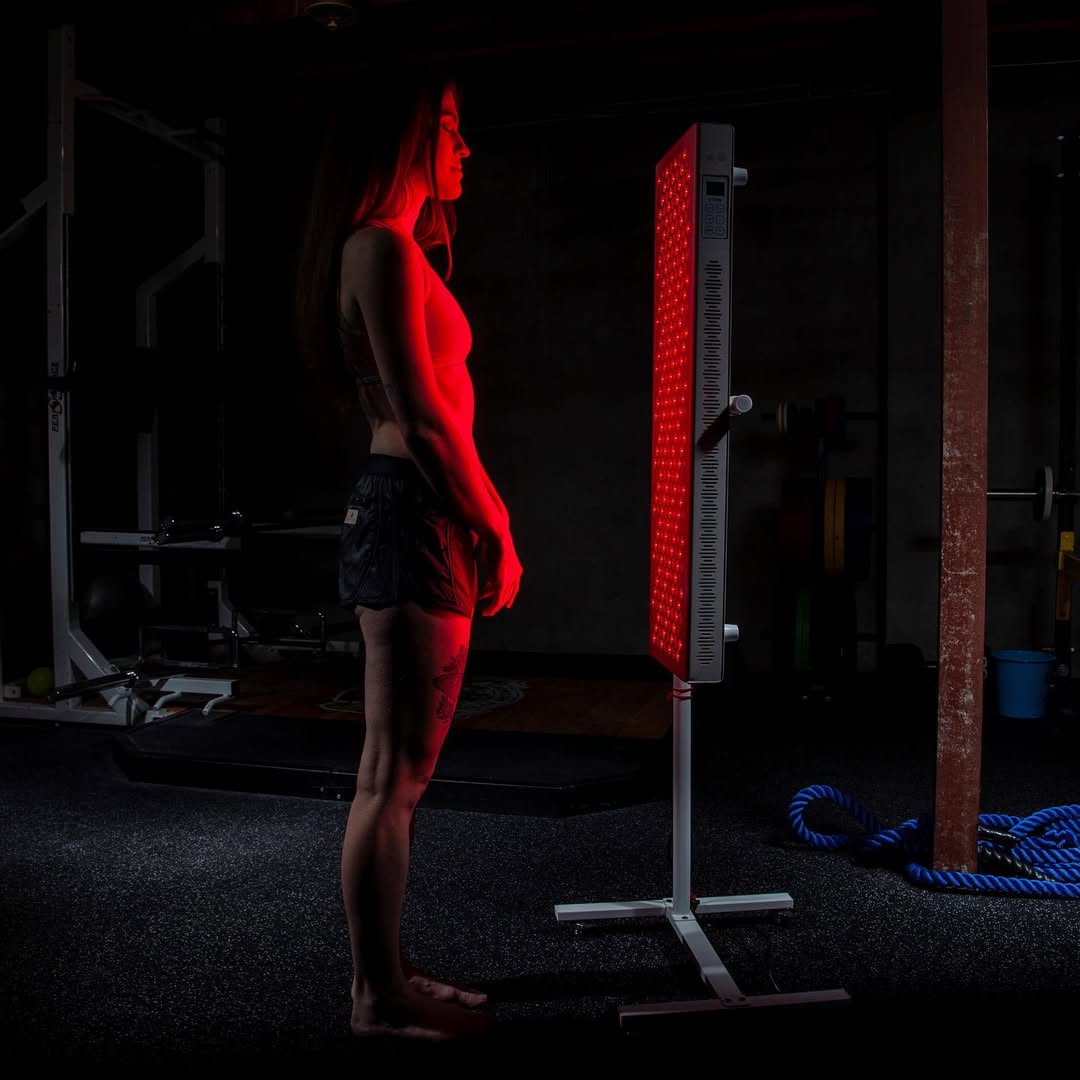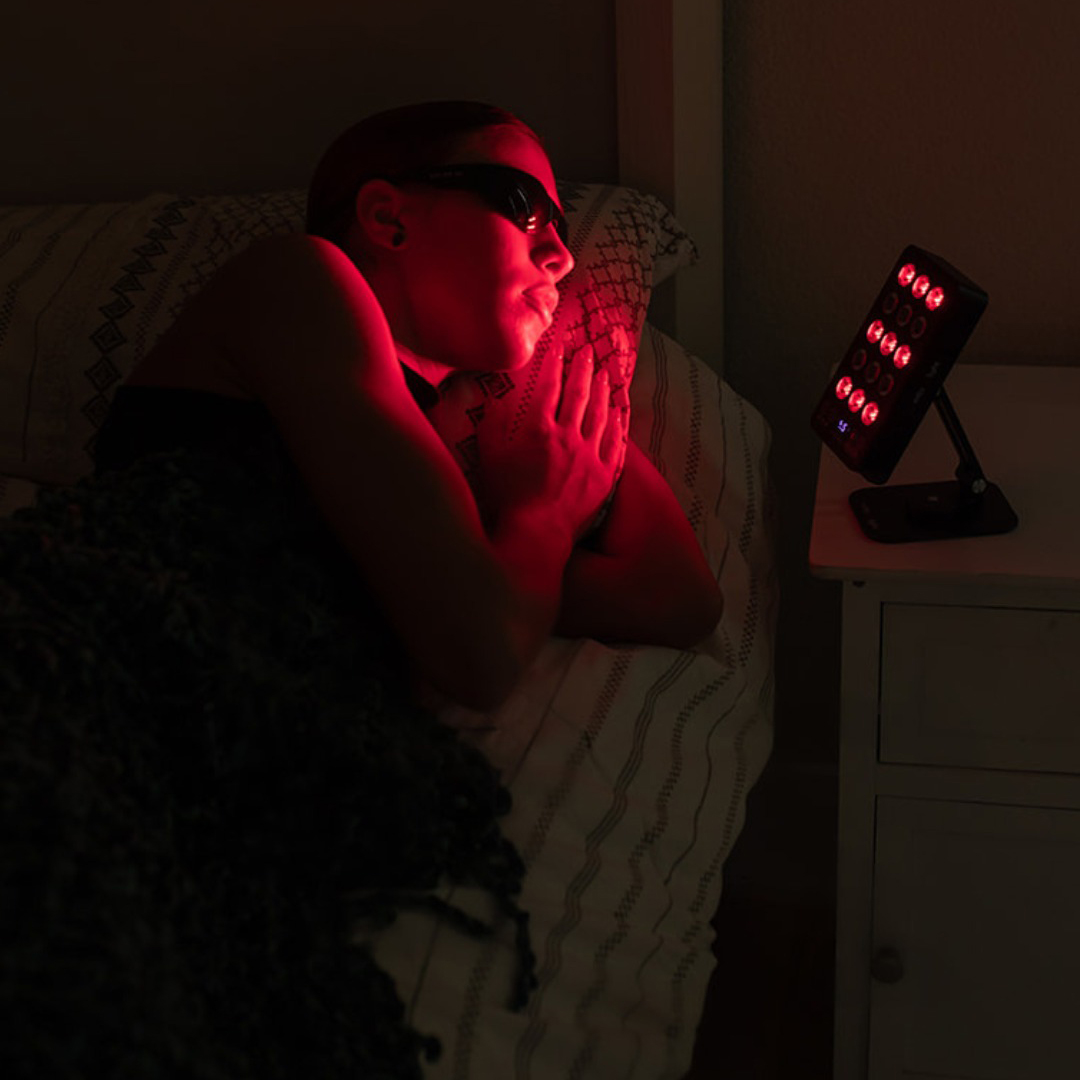![]() Free Shipping
Free Shipping ![]() Buy Now, Pay Later
Buy Now, Pay Later ![]() Eligible
Eligible
Can Red Light Therapy Shrink a Thyroid Nodule? A Science-Backed Guide
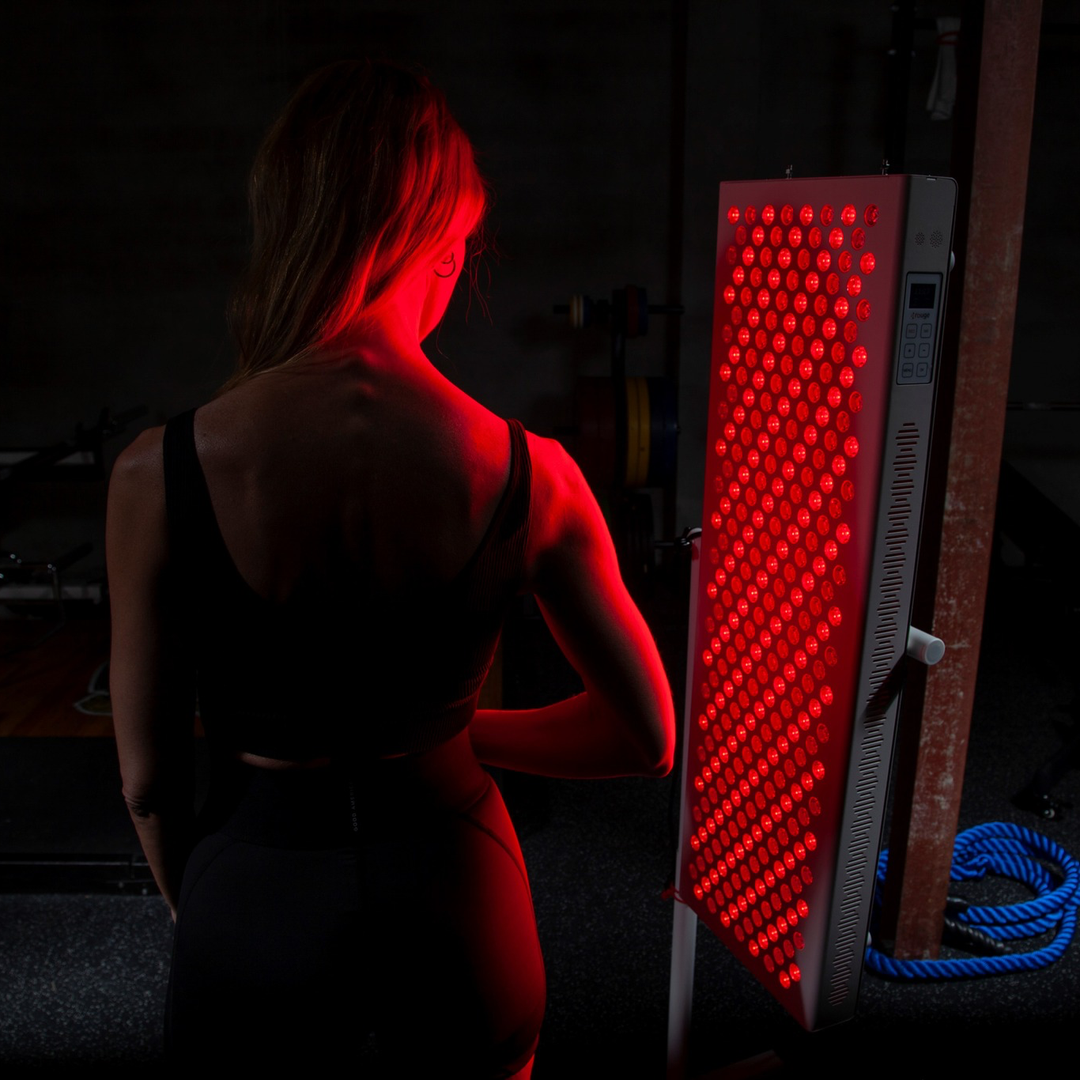
Thyroid nodules are an incredibly common finding, with studies suggesting over 50% of people have them by the age of 60. While most are benign, the discovery of a nodule can be a source of anxiety and often leads to a “watch-and-wait” approach. In the search for non-invasive solutions, red light therapy (RLT) has emerged as a promising candidate. This article investigates the science behind RLT and its potential to not only support overall thyroid function but also to shrink thyroid nodules.
What is Red Light Therapy?
Red light therapy, also known as photobiomodulation (PBM) or low-level laser therapy (LLLT), is a non-invasive treatment that exposes the skin to specific wavelengths of red and near-infrared (NIR) light.
Unlike UV light, which can damage the skin, these low-wavelength lights penetrate the skin without generating heat or causing harm. The light energy is absorbed by the mitochondria in our cells, often called the “cellular power plants.”
Expert Insight: “Think of red light as a battery charger for your cells. When mitochondria absorb this specific light spectrum, it stimulates them to produce more adenosine triphosphate (ATP), which is the fundamental energy currency of every cell in the body.” – Dr. Michael Hamblin, a leading photomedicine researcher.
This boost in cellular energy leads to a cascade of beneficial effects, including reduced inflammation, improved blood flow, and enhanced cellular repair.
The Science Behind Red Light Therapy and the Thyroid Gland
The thyroid gland, located in the front of the neck, is uniquely positioned to benefit from topical RLT applications. The science connecting RLT to thyroid health is built on several key mechanisms:
1. Reducing Inflammation
Many thyroid nodules, especially those associated with Hashimoto’s thyroiditis, are linked to chronic inflammation. RLT has been proven to significantly reduce inflammatory markers like TNF-α and IL-6, creating a less hostile environment for the thyroid.
2. Stimulating Cellular Repair and Regeneration
By boosting ATP production, RLT provides thyroid cells with the energy needed to function optimally and repair themselves. This can help normalize thyroid hormone production and improve the overall health of the glandular tissue.
3. Improving Blood Circulation
RLT promotes the formation of new capillaries (angiogenesis) and improves blood flow to the treated area. Better circulation means more oxygen and nutrients are delivered to the thyroid, while waste products are removed more efficiently.
Evidence: Can Red Light Therapy Specifically Shrink Thyroid Nodules?
This is the central question, and while large-scale clinical trials are still needed, the existing research is highly encouraging.
The most compelling evidence often cited comes from a 2013 Brazilian case study. A patient with a large, benign thyroid nodule was treated with a series of LLLT sessions. After the treatment course, ultrasound imaging confirmed a remarkable reduction in the nodule’s volume.
Furthermore, a 2020 review published in the Journal of Thyroid Research highlighted that photobiomodulation shows “therapeutic potential” for autoimmune thyroid diseases like Hashimoto’s, which is a common cause of nodule formation.
Patient Perspective: “After six months of consistent red light therapy on my neck, my follow-up ultrasound showed my nodule had decreased in size. My endocrinologist was surprised, and I felt a noticeable improvement in my energy levels and neck discomfort.” – Anonymous user from a thyroid health forum.
While anecdotal reports and preliminary studies are positive, it is crucial to state that RLT is not yet a universally accepted medical treatment for thyroid nodules. It should be considered a complementary approach.
Red Light Therapy vs. Conventional Thyroid Nodule Management
The following table outlines how RLT compares to standard medical approaches.
| Treatment Method | How It Works | Pros | Cons |
|---|---|---|---|
| Watchful Waiting | Monitoring nodule size over time with ultrasounds. | Non-invasive, no side effects. | No active treatment; can cause anxiety. |
| Red Light Therapy | Uses light energy to boost cellular function & reduce inflammation. | Non-invasive, minimal side effects, supports overall thyroid health. | Not yet mainstream; requires consistent use; results can vary. |
| Radiofrequency Ablation | Uses heat from radio waves to destroy nodule tissue. | Minimally invasive, preserves thyroid function. | Requires a skilled specialist; can cause temporary discomfort. |
| Surgery (Thyroidectomy) | Partial or complete removal of the thyroid gland. | Definitive removal of the nodule. | Invasive, carries surgical risks, may require lifelong hormone replacement. |
How to Use Red Light Therapy for Thyroid Nodules
If you are considering RLT for your thyroid, follow these steps for safety and effectiveness.
1. Consult Your Doctor First
This is the most critical step. Before starting any new therapy, discuss it with your endocrinologist or primary care physician. Ensure your nodule has been properly evaluated and is confirmed to be benign.
2. Choosing the Right Device
For thyroid application, a panel or belt device that can be positioned directly on the neck is ideal. Key specifications to look for:
- Wavelength: A combination of red (630-660nm) and near-infrared (810-850nm) is considered most effective for deep tissue penetration.
- Power Density (Irradiance): A higher power density (measured in mW/cm²) allows for shorter treatment times.
- FDA-Cleared: Opt for devices that are FDA-cleared for general wellness, which indicates a certain level of safety and quality control.
3. A Standard Treatment Protocol
While protocols can vary, a general starting point is:
- Frequency: 5-7 times per week.
- Session Duration: 5-15 minutes per session.
- Distance: Position the device 6-12 inches from your neck, as per the manufacturer’s instructions.
- Consistency is Key: Benefits are cumulative, so daily, consistent use is essential for seeing potential results over 3-6 months.
VELLGUS Elite V2
THE #1 RATED RED LIGHT DEVICE
Important Considerations and Potential Side Effects
RLT is considered very safe for most people. Side effects are rare and typically mild, but can include:
- Temporary redness or skin irritation.
- Mild headache after a session.
- Eye strain if proper eye protection is not used.
Contraindications: Individuals with photosensitivity conditions, those taking photosensitizing medications, or people with active cancer in the treatment area should avoid RLT without explicit medical approval.
Conclusion: A Promising Complementary Approach
While red light therapy is not a magic bullet, it represents a compelling, non-invasive, and science-backed approach to supporting thyroid health. The mechanism of action—reducing inflammation and energizing cells—directly addresses the underlying issues that can lead to nodule formation and growth.
Existing research and user testimonials suggest a real potential for RLT to help shrink benign thyroid nodules and improve overall well-being. By working with your healthcare provider and committing to a consistent protocol, red light therapy could be a valuable part of your thyroid health toolkit.



